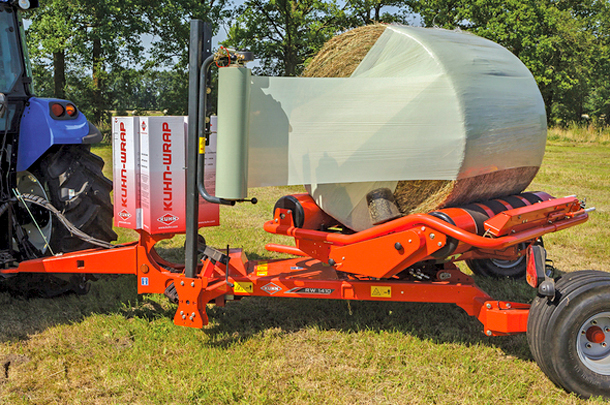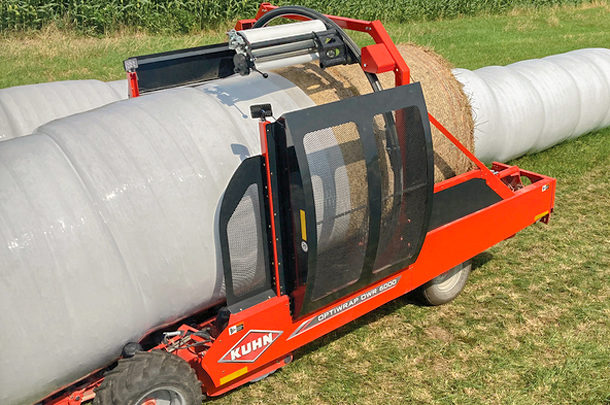There is growing interest in wrapping hay as farmers look for solutions to put up quality hay in tight weather windows. Wrapping high-moisture hay bales can reduce the time hay needs to dry, minimizing the risks of a crop getting rained on. Properly wrapped bales preserve high-quality forage for a long time.
When looking at wrappers, there are machines that can wrap round or square bales, as well as wrapping bales individually or in-line. Regardless of bale shape, which option is better: individually wrapped bales or bales wrapped in-line? Each method has its pros and cons, but which is right for your operation?
There are a few basic principles important for both wrapping methods. First is to ensure bales are wrapped at the correct moisture. Wrapping a bale seals it from outside air with the goal of fermenting the hay, similar to a bunker or silo. This means the crop needs to be at the proper moisture for the fermentation process to occur; too dry or too wet and the crop will not properly preserve.
Similarly, adequate layers of wrap are important. Sufficient film is needed to create a barrier to effectively keep oxygen out of the bale, regardless of wrapper type. Too few layers and air can get in allowing the bale to spoil, while too many layers will use excessive plastic, increasing the cost of storage.
Most wrappers will include a table in the operator’s manual with a recommendation on how many layers are needed based on the moisture of the crop and how long the bales will be stored. Drier bales and longer storage periods generally require additional layers of film.
 The savings comes from not using film on two ends of each bale. Photo courtesy of Kuhn North America.
The savings comes from not using film on two ends of each bale. Photo courtesy of Kuhn North America.Assuming bales will be tightly packed and properly handled and wrapped, which style of wrapper makes the most sense? Individually wrapped bales provide a convenient package of feed. They can be moved around and shipped with a little extra care in handling, facilitating the sale of hay without too much risk of spoilage. A squeeze-type loader attachment will be needed, as a spear or fork-type attachment will create holes in the plastic.
Additionally, for operations using the bales in a TMR mixer, bales can be sized during baling to provide the right amount of hay for each load. You can simply remove the wrap and binding material from the bale and dump it in the mixer in a pre-packed quantity. One drawback to individual wrapping is it does require slightly more film compared to in-line wrapping.
With the bale preserved, there is less dry matter loss compared to a dry bale stored outside. Often, the additional quantity of feed and nutritional value preserved per bale can offset the cost of the film.
With in-line wrapped bales, the biggest benefit is the reduced quantity of film. With the bales compressed next to each other inside the tube, only the circumference of the bale needs film. The layer count needed for an individually wrapped bale and an in-line wrapped bale is generally about the same.
The savings comes from not using film on the two ends of each bale. For a properly sealed tube, an end cap, or individually wrapped bale, should be placed at both ends. Otherwise, several bales at the end of the tube can spoil from exposure to outside air. When comparing costs for each method, it is important to not only look at the film, but also what costs are associated with capping the ends of the tube.
One disadvantage of the tube is, once opened, it is important to feed the bales regularly or they can begin to spoil, similar to opening a silage bag. If you’re feeding regularly or selling bales locally a few at a time, this would not be an issue. On the plus side, a spear or fork is fine to use to move the bales since there is no concern about puncturing plastic.
If you are interested in storing high-quality hay with minimal dry matter loss, while reducing the risks of weather, wrapping bales is a great option. If you sell a lot of hay, don’t feed bales very frequently or need to move bales after they are wrapped, individually wrapped bales might be the best option. If most of your bales stay local and are fed regularly, an in-line wrapper can reduce film use and also provide high-quality hay for your livestock.












